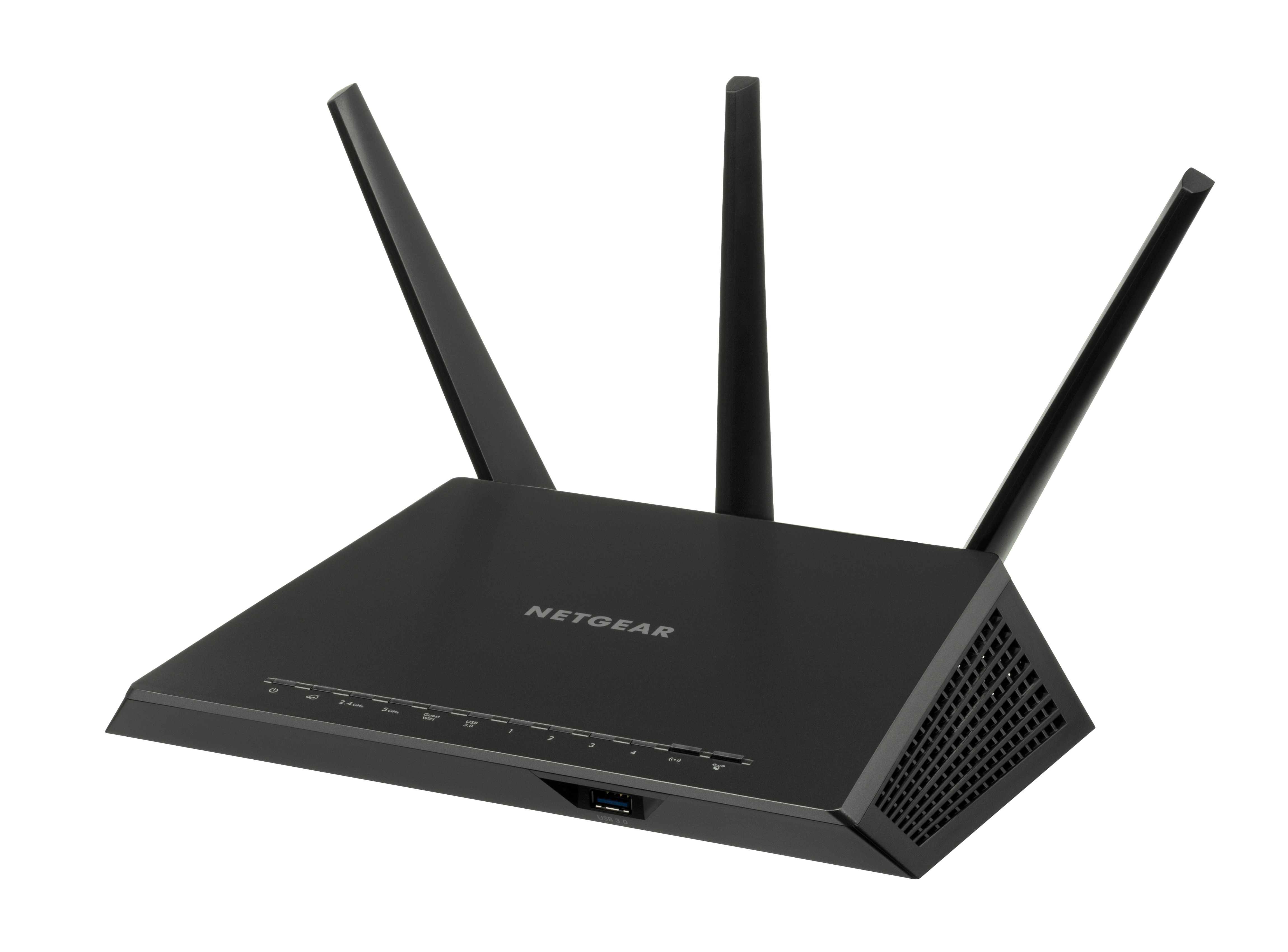|
Netgear Switch Discovery Protocol
Netgear Switch Discovery Protocol (NSDP) is a management protocol for several network device families, designed by Netgear. Message structure Common message header Message body record structure Message body records are type–length–value (TLV) structures. Type field may be one of following values in the table(list in incomplete): Protocol flow examples Network devices discovery (MAC-address an device model discovery): Host with MAC=XX:XX:XX:XX:XX:XX from UDP-port 63321 or 63323 sending packet to broadcast IP-address 255.255.255.255 and UDP-port 63322 or 63324 Header @0x00000000 0x01 0x01 0x000000000000 0xXXXXXXXXXXXX 0x000000000000 0x0000 0x0001 0x4E534450 0x00000000 Body @0x00000020 0x0001 0x0000 0x0004 0x0000 Marker @0x00000028 0xFFFF0000 EACH Device responds with message like Header @0x00000000 0x01 0x02 0x000000000000 0xXXXXXXXXXXXX 0xYYYYYYYYYYYY 0x0000 0x0001 0x4E534450 0x00000000 Body @0x00000020 0x0001 0 ... [...More Info...] [...Related Items...] OR: [Wikipedia] [Google] [Baidu] |
Netgear
Netgear, Inc. (stylized as NETGEAR in all caps), is an American computer networking company based in San Jose, California, with offices in about 22 other countries. It produces networking hardware for consumers, businesses, and service providers. The company operates in three business segments: retail, commercial, and as a service provider. Netgear's products cover a variety of widely used technologies such as wireless (Wi-Fi, LTE (telecommunication), LTE and 5G), Ethernet and Power-line communication, powerline, with a focus on reliability and ease-of-use. The products include wired and wireless devices for broadband access and computer network, network connectivity, and are available in multiple configurations to address the needs of the end-users in each geographic region and sector in which the company's products are sold. As of 2020, Netgear products are sold in approximately 24,000 retail locations around the globe, and through approximately 19,000 value-added resellers, ... [...More Info...] [...Related Items...] OR: [Wikipedia] [Google] [Baidu] |
MAC Address
A MAC address (short for medium access control address or media access control address) is a unique identifier assigned to a network interface controller (NIC) for use as a network address in communications within a network segment. This use is common in most IEEE 802 networking technologies, including Ethernet, Wi-Fi, and Bluetooth. Within the Open Systems Interconnection (OSI) network model, MAC addresses are used in the medium access control protocol sublayer of the data link layer. As typically represented, MAC addresses are recognizable as six groups of two hexadecimal digits, separated by hyphens, colons, or without a separator. MAC addresses are primarily assigned by device manufacturers, and are therefore often referred to as the burned-in address, or as an Ethernet hardware address, hardware address, or physical address. Each address can be stored in the interface hardware, such as its read-only memory, or by a firmware mechanism. Many network interfaces, however, ... [...More Info...] [...Related Items...] OR: [Wikipedia] [Google] [Baidu] |
Type–length–value
Within communication protocols, TLV (type-length-value or tag-length-value) is an encoding scheme used for informational elements. A TLV-encoded data stream contains code related to the record type, the record value's length, and finally the value itself. Details The type and length are fixed in size (typically 1–4 bytes), and the value field is of variable size. These fields are used as follows: ; Type: A binary code, often simply alphanumeric, which indicates the kind of field that this part of the message represents; ; Length: The size of the value field (typically in bytes); ; Value: Variable-sized series of bytes which contains data for this part of the message. Some advantages of using a TLV representation data system solution are: * TLV sequences are easily searched using generalized parsing functions; * New message elements which are received at an older node can be safely skipped and the rest of the message can be parsed. This is similar to the way that unknown XML ... [...More Info...] [...Related Items...] OR: [Wikipedia] [Google] [Baidu] |
IP Address
An Internet Protocol address (IP address) is a numerical label such as that is assigned to a device connected to a computer network that uses the Internet Protocol for communication. IP addresses serve two main functions: network interface identification, and location addressing. Internet Protocol version 4 (IPv4) was the first standalone specification for the IP address, and has been in use since 1983. IPv4 addresses are defined as a 32-bit number, which became too small to provide enough addresses as the internet grew, leading to IPv4 address exhaustion over the 2010s. Its designated successor, IPv6, uses 128 bits for the IP address, giving it a larger address space. Although IPv6 deployment has been ongoing since the mid-2000s, both IPv4 and IPv6 are still used side-by-side . IP addresses are usually displayed in a human-readable notation, but systems may use them in various different computer number formats. CIDR notation can also be used to designate how much ... [...More Info...] [...Related Items...] OR: [Wikipedia] [Google] [Baidu] |
Internet Protocol
The Internet Protocol (IP) is the network layer communications protocol in the Internet protocol suite for relaying datagrams across network boundaries. Its routing function enables internetworking, and essentially establishes the Internet. IP has the task of delivering Packet (information technology), packets from the source Host (network), host to the destination host solely based on the IP addresses in the packet Header (computing), headers. For this purpose, IP defines packet structures that encapsulation (networking), encapsulate the data to be delivered. It also defines addressing methods that are used to label the datagram with source and destination information. IP was the connectionless datagram service in the original ''Transmission Control Program'' introduced by Vint Cerf and Bob Kahn in 1974, which was complemented by a connection-oriented service that became the basis for the Transmission Control Protocol (TCP). The Internet protocol suite is therefore often referre ... [...More Info...] [...Related Items...] OR: [Wikipedia] [Google] [Baidu] |
User Datagram Protocol
In computer networking, the User Datagram Protocol (UDP) is one of the core communication protocols of the Internet protocol suite used to send messages (transported as datagrams in Network packet, packets) to other hosts on an Internet Protocol (IP) network. Within an IP network, UDP does not require prior communication to set up communication channels or data paths. UDP is a connectionless protocol, meaning that messages are sent without negotiating a connection and that UDP does not keep track of what it has sent. UDP provides checksums for data integrity, and port numbers for addressing different functions at the source and destination of the datagram. It has no Handshake (computing), handshaking dialogues and thus exposes the user's program to any Reliability (computer networking), unreliability of the underlying network; there is no guarantee of delivery, ordering, or duplicate protection. If error-correction facilities are needed at the network interface level, an applica ... [...More Info...] [...Related Items...] OR: [Wikipedia] [Google] [Baidu] |
Patch (computing)
A patch is data that is intended to be used to modify an existing software resource such as a computer program, program or a computer file, file, often to fix software bug, bugs and security vulnerability, security vulnerabilities. A patch may be created to improve functionality, usability, or Computer performance, performance. A patch is typically provided by a vendor for updating the software that they provide. A patch may be created manually, but commonly it is created via a tool that compares two versions of the resource and generates data that can be used to transform one to the other. Typically, a patch needs to be applied to the specific version of the resource it is intended to modify, although there are exceptions. Some patching tools can detect the version of the existing resource and apply the appropriate patch, even if it supports multiple versions. As more patches are released, their cumulative size can grow significantly, sometimes exceeding the size of the resource ... [...More Info...] [...Related Items...] OR: [Wikipedia] [Google] [Baidu] |
TFTP
The Trivial File Transfer Protocol (TFTP) is a simple Lockstep (computing), lockstep communication protocol for transmitting or receiving files in a client-server application. A primary use of TFTP is in the early stages of nodes booting on a local area network when the operating system or firmware images are stored on a file server. TFTP was first standardized in 1981 and updated in . Overview Due to its simple design, TFTP can be easily implemented by code with a small memory footprint. It is, therefore, the protocol of choice for the initial stages of any network booting strategy like Bootstrap Protocol, BOOTP, Preboot Execution Environment, PXE, Boot Service Discovery Protocol, BSDP, etc., when targeting from highly resourced computers to very low resourced Single-board computers (SBC) and System-on-a-chip, System on a Chip (SoC). It is also used to transfer firmware images and configuration files to network appliances like Router (computing), routers, Firewall (computing) ... [...More Info...] [...Related Items...] OR: [Wikipedia] [Google] [Baidu] |
Network Management
Network management is the process of administering and managing computer networks. Services provided by this discipline include fault analysis, performance management, provisioning of networks and maintaining quality of service. Network management software is used by network administrators to help perform these functions. Technologies A small number of accessory methods exist to support network and network device management. Network management allows IT professionals to monitor network components within large network area. Access methods include the SNMP, command-line interface (CLI), custom XML, CMIP, Windows Management Instrumentation (WMI), Transaction Language 1 (TL1), CORBA, NETCONF, RESTCONF and the Java Management Extensions (JMX). Schemas include the Structure of Management Information (SMI), YANG, WBEM, the Common Information Model ( CIM Schema), and MTOSI amongst others. Value Effective network management can provide positive strategic impacts. For ex ... [...More Info...] [...Related Items...] OR: [Wikipedia] [Google] [Baidu] |

